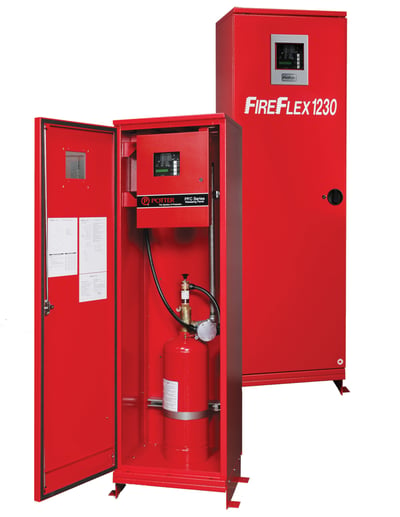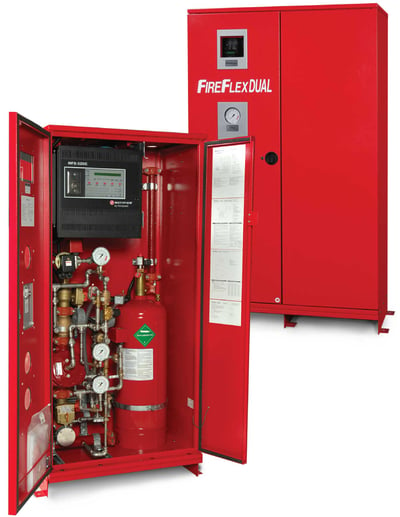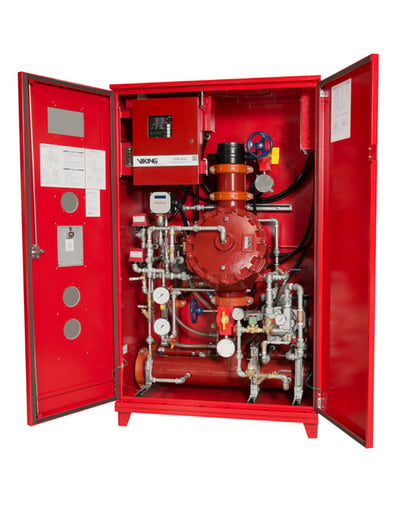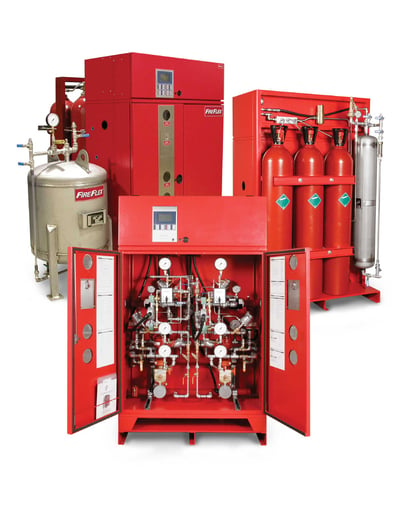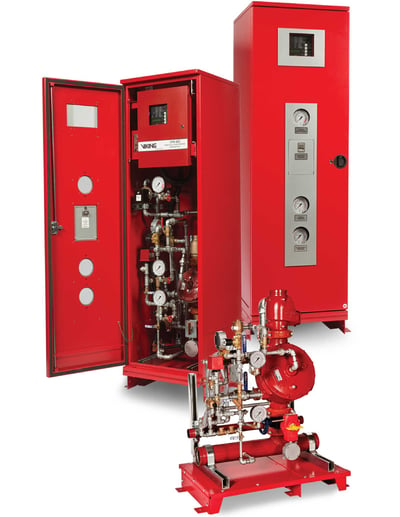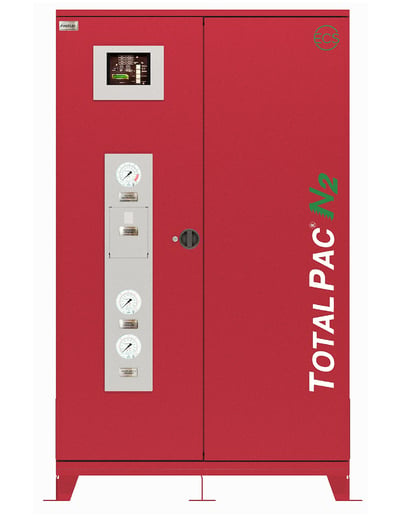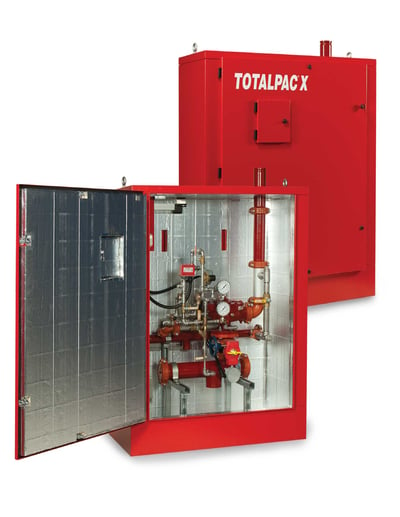Aircraft Storage
FireFlex Systems provides state-of-the-art innovative, flexible fire protection solutions, designed for mitigating risks and securing aircraft storage.
Protection of Aircraft Hangars
Overview of a frequent use case
Because of the current trend towards small regional airlines and corporate jets usage for point to point air travel, many airports are getting new aircraft hangars built. These smaller jet planes are often stored and maintained in smaller hangars, typically classified as Class II Hangars. This fast growing industry segment makes that more and more hangars are getting built or re-commissioned for this usage, along with their need
for adequate fire protection.
Problems with the use of traditional technologies
As described above, all four traditional methods of protection require an already available water supply source of large capacity that is often simply not
available at these smaller regional and remote airports. In many locations, the water main loop either has to bebrought near the new hangar, with the associated
infrastructure costs or as is often the case, adequate water pressure and quantity is simply not available !
- 1. They can be designed using the same criteria as Group I Hangars, which include an automatic foamwater deluge type sprinkler system. If air aspirated devices are installed, the design discharge rate can be reduced from 0.20 gpm/sq.ft. (8.12Lpm/sq.m.) to a minimum of 0.16 gallons of foam solution per minute, per square feet (6.5 Lpm/sq.m.) of floor area.
- A combination of automatic sprinkler protection and an automatic low-level, low expansion foam system can also be used.
- A combination of automatic sprinkler protection and an automatic high expansion foam system is also an option.
- Finally, a closed-head foam-water sprinkler can be installed.
Other times, water is available but the total water requirement of these four types of foam-water systems require the use of expensive high capacity water pumps, either electric or diesel powered, with their associated hardware. Drainage requirements for such large volumes of water are often totally overlooked and can be quite substantial.
Due to the very competitive business environment owners of small commercial operations and airlines work in, the investment necessary to fit such systems quickly becomes prohibitive and the hangar often ends up without adequate fire protection or, as is often the case, only partially protected. Insurance premiums get higher and the local authority having jurisdiction is often on the back of the owners to do something about this added risk.
A solid solution is available
Although ICAF is not included in NFPA-409 at this time, numerous full-scale Class B fire tests have clearly demonstrated that ICAF extinguishing systems perform at an equivalent level to foam-water extinguishing systems in controlling and extinguishing Class B fires. Based on this, when water supply was an issue, Authorities Having Jurisdiction (AHJ) have approved the use of Compressed Air Foam as an acceptable alternative.
The designer should confirm with the AHJ on his project that ICAF is accepted as an alternative before proceeding with the design. When it is, a fifth solution is now available to him, providing better fire suppression capabilities with only 25% of the water requirements !



